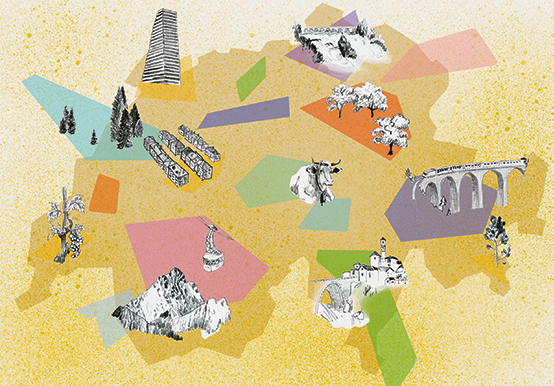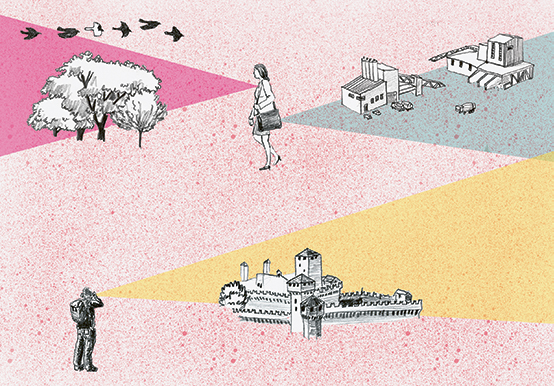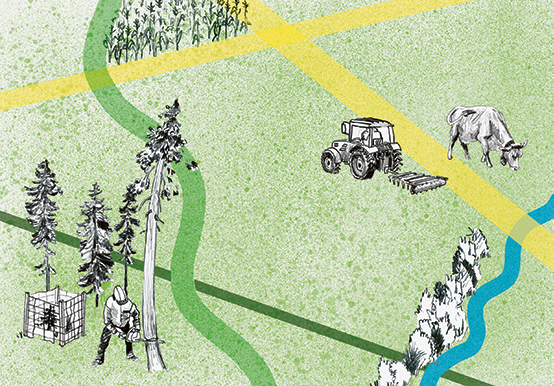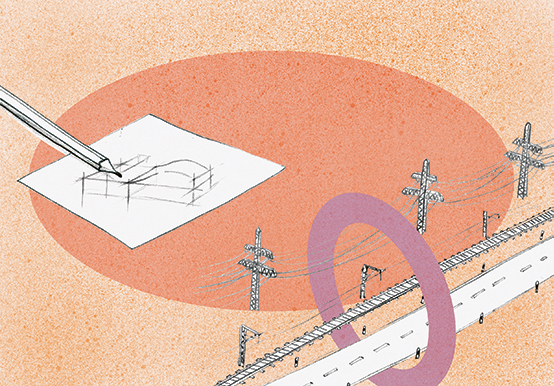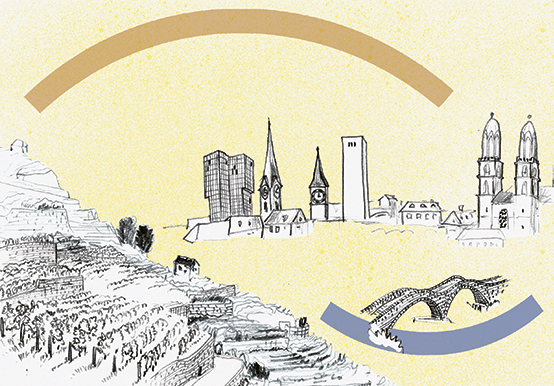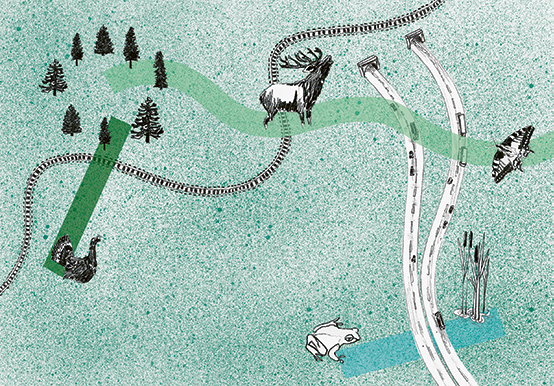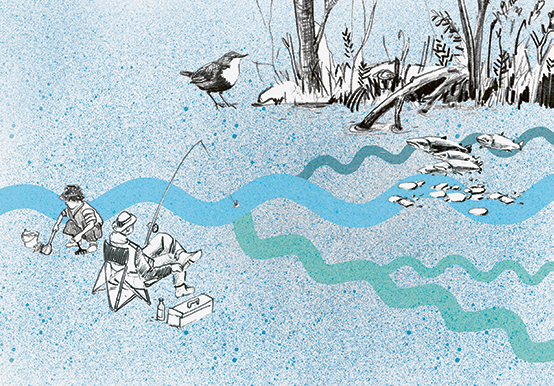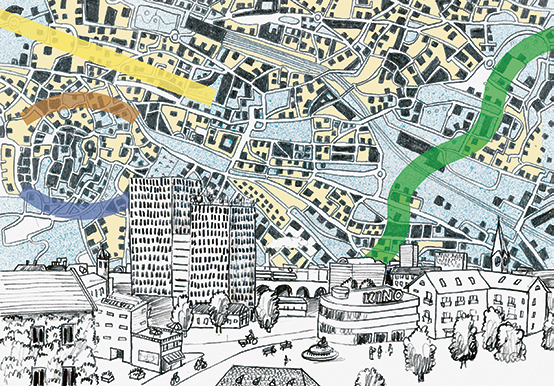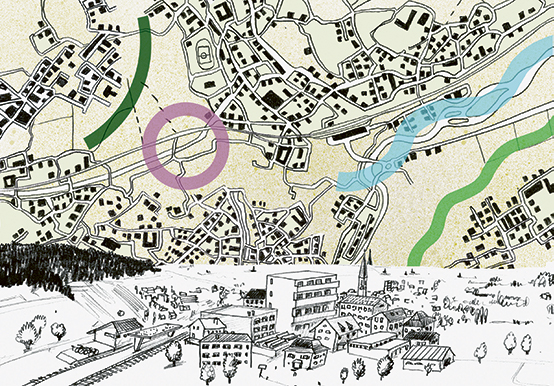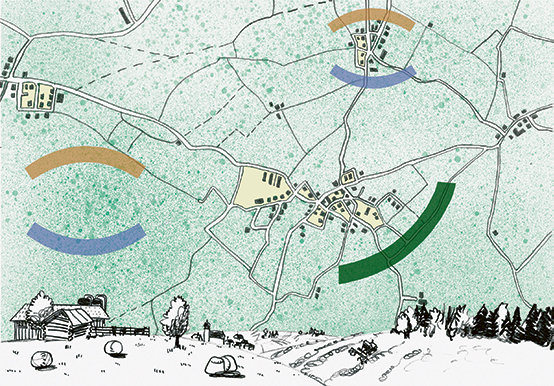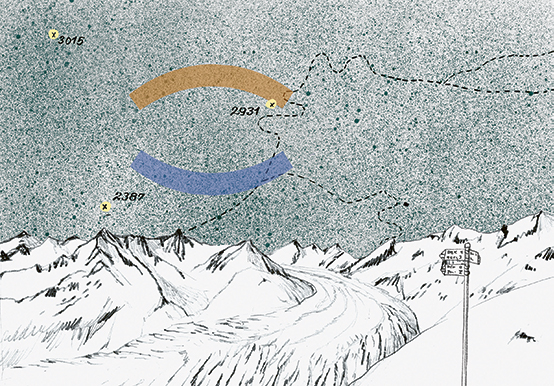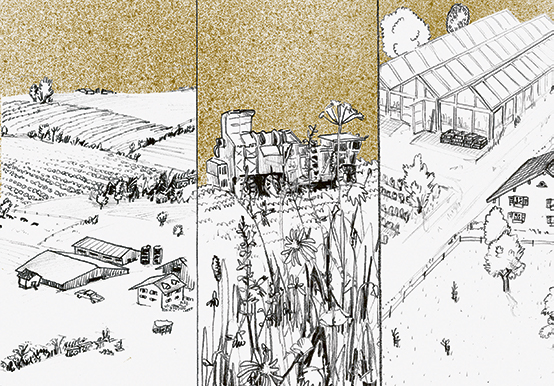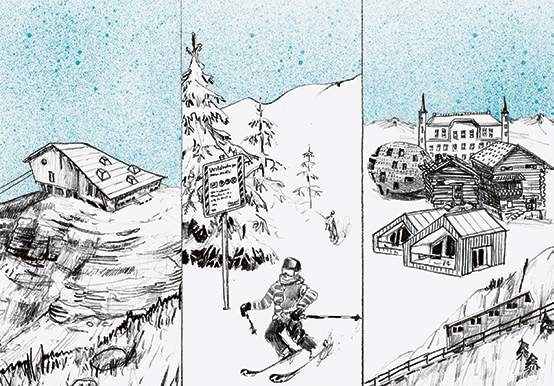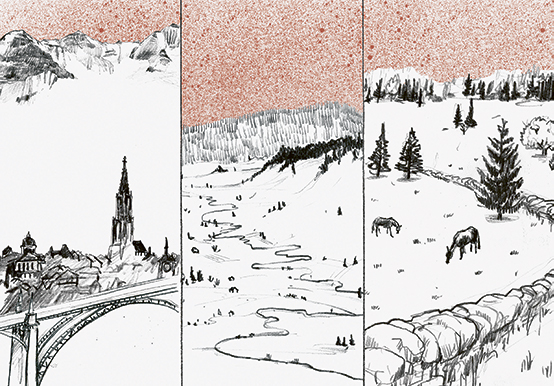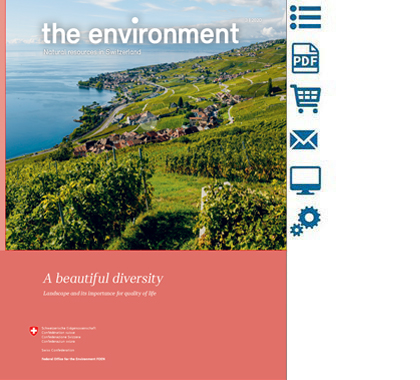Nowadays, shaping landscape change in a high-quality way is part of a commune’s economic development policy.The updated Swiss Landscape Concept (SLC) now defines objectives to this end: ensuring green spacesand carefully designing settlement edges. The example of Manno (canton of Ticino) shows how the abstractrequirements of the SLC can be implemented in practice.
Text: Vera Bueller
Why Manno? What makes this particular commune such a successful example of how the SLC’s objectives can be defined and achieved at a local level? Rapid settlement and economic development in recent decades has left unsightly marks on the wider Lugano area, with the proliferation of traffic infrastructure, industrial buildings, small and medium-sized enterprises, and logistics and other service companies. But Manno’s former mayor, Fabio Giacomazzi, sees beyond this. At the offices of his architecture and spatial planning agency, he takes out the commune’s design plan and explains: “You have to look more closely at the buffer zones between the industrial areas and the hills with the old village centre.” Around ten years ago, the local council started buying plots here to prevent private individuals from building on the land and keep it out of the hands of speculators.
This proved to be a boon for the environment. Back in 2004, Manno brought in Fabio Giacomazzi as a spatial planner to overhaul its design plan.Giacomazzi (who went on to become mayor from 2012 to 2016) had the foresight to realise that in some areas even the most sophisticated development plan would damage the landscape. “If you design the landscape with a focus on quality, this creates added value. And it results in open spaces that can make the area attractive to businesses – especially on the outskirts of cities”, says Daniel Arn, Deputy Head of the FOEN’s Landscape Policy Section, who praises Giacomazzi’s pioneering work.
Settlement edges as places for recreation
With Giacomazzi’s election as mayor, the project quickly took shape. Thanks to its industry and commerce, the commune also had the funds to buy up property worth CHF 2 million. “Rather than lowering the tax rate further, we wanted to use surpluses to create leeway for a careful design of the area – including use by non-profit organisations and the public”, says Giacomazzi.
The focus was on three areas: the Piana-Cairelletto district, which lies between the commercial/industrial area and the residential zone, and the Ronco Do and Bellavista-Ronchetti building zones on the slope above the old village centre. Wasn’t it tricky to take some 12,000 m2 of land out of potential development? “If the area had been flat and easily accessible, rather than steeply sloping, it might have been a different story”, says Giacomazzi, smiling. But that was not the case, so the building zones are now reserved for recreation and agriculture. To ensure quality design, a competition was organised between three firms of landscape architects.
In the Ronco Do area, the council has laid outa public park for leisure and educational purposes, including a space where people can enjoy a pic-nic or while away the time, a vineyard and anorchard containing rare fruit varieties. “An experimental area for organic farming has been created, which also serves as an educational facility for schools”, explains Giacomazzi on a visit to the site.A network of footpaths leads through the area, taking in woodland, chestnut groves and dry stone walls.
The project cost CHF 675,000, 40% of which was covered by federal and cantonal funding and money from the Swiss Landscape Fund. “Key to all this was the realisation that settlement edges matter, because the built environment is part of the landscape too”, the designer points out. “In Ticino, the authorities mostly recognised this some time ago, so some excellent local projects have already taken shape there”, confirms the FOEN’s Daniel Arn. However, he goes on to say that within Switzerland as a whole, awareness of the importance of landscape design is often lacking, as is the relevant expertise.
New contact point for local councils?
The FOEN is exploring the possibility of setting up a landscape advisory unit to impart knowledge and promote projects, and generally raise awareness about landscape quality, by means of events or walks in different regions for example. A contact point providing initial advice to local councils is also being considered. This would be based on the updated SLC. During the SLC consultation, the Swiss Union of Cities (SSV) stressed the importance of measures at the communal level. “We and our members would like to see the Confederation become an implementation-oriented partner and specific projects and measures, such as modules for advice, education, communication and awareness-raising as well as cooperation, emerge in the near future, implemented in direct cooperation with cities and communes”, explains SSV Director Renate Amstutz. The essential aim, she goes on, is to contribute to a new understanding of landscape. “For us too, landscape always includes the urban landscape, and not just the countryside.”
The importance of “everyday landscape” wasemphasised in the earlier SLC dating from 1997, and yet, according to Daniel Arn, so far it has not played a major role in spatial planning. “With the updated SLC, it is now coming to the fore.” Landscape change is inevitable, he says, but quality does not come about by accident: it has to be actively pursued. The updated SLC encourages all stakeholders to make a joint contribution to this – the Confederation, cantons, communes and outside organisations. “First and foremost, green spaces have to be secured as local recreational areas, and settlement edges in particular require careful design.” This is exactly what has happened in Manno, making the commune an exemplar for how the dry content of a policy document can be turned into reality on the ground.
Further information
Last modification 02.09.2020


